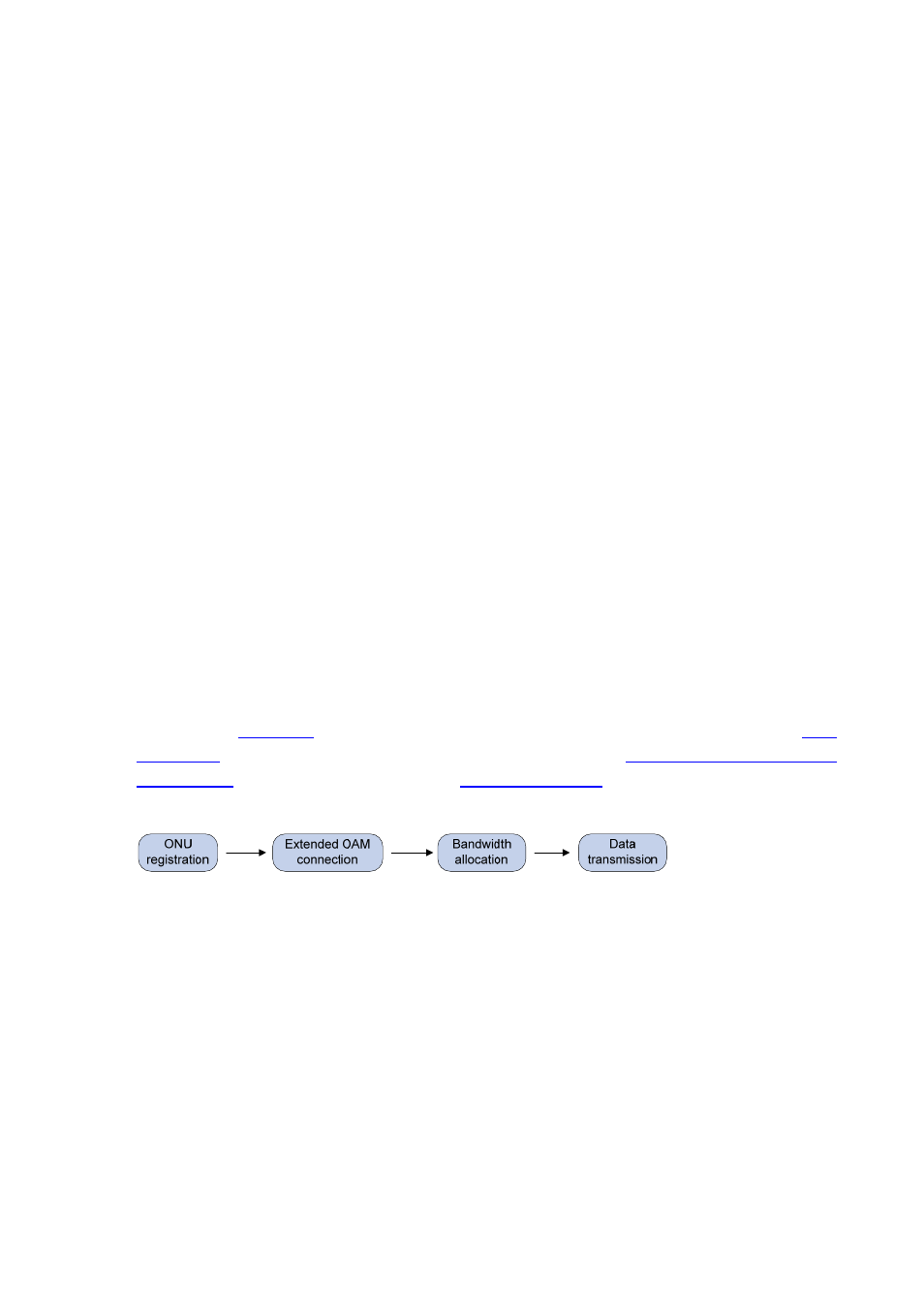Fttc, Fttb, Ftth – H3C Technologies H3C S7500E Series Switches User Manual
Page 36: Data transmission in an epon system, Onu registration

2-3
FTTC
In an FTTC system, ONUs are deployed at roadside or beside the junction boxes of telegraph poles.
Usually, twisted-pair copper wires are used to connect the ONUs to each user, and coaxial cables are
used to transmit broadband graphic services. One of the main benefits of the FTTC technology is that
it allows the existing copper wire infrastructure to continue to be used between the ONUs and
customer premises, thus postponing the investments on optical fibers to the home. Currently, the
FTTC technology is the most practical and economical Optical Access Network (OAN) solution for
providing narrowband services below 2 Mbps. For services integrating narrowband and broadband
services, however, FTTC is not the ideal solution.
FTTB
In an FTTB system, ONUs are deployed within buildings, with the optical fibers led into user homes
through ADSL lines, cables, or LANs. Compared with FTTC, FTTB has a higher usage of optical fiber
and therefore is more suitable for user communities that are dense or need narrowband/broadband
integrated services.
FTTH
In an FTTH system, ONUs are deployed in user offices or homes to implement a fully transparent
optical network, with the ONUs independent of the transmission mode, bandwidth, wavelength, and
transmission technology. Therefore, FTTH is ideal for the long term development of optical access
networks.
Data Transmission in an EPON System
An EPON system uses the single-fiber wavelength division multiplexing (WDM) technology (with
downlink central wavelength of 1490 nm and uplink central wavelength of 1310 nm) to implement
single-fiber bidirectional transmission, supporting a transmission distance of up to 20 km (12.43 miles).
As shown in
, before an EPON system transmits data, ONU registration (See
), extended OAM connection establishment (See
), and bandwidth allocation (See
) are required.
Figure 2-2
Data transmission in an EPON system
ONU Registration
Four types of Multipoint Control Protocol (MPCP) messages are used in ONU registration: GATE,
REGISTER_REQ, REGISTER, and REGISTER_ACK. Each of these messages contains a time stamp
field that records the local clock at the time of packet transmission. There are two types of GATE
messages:
General GATE messages, which allocate bandwidths in unicast mode.
Discovery GATE messages, which discover ONUs in broadcast mode.
An ONU registration process is as follows:
1) An OLT broadcasts a discovery GATE message to notify the start time and length of the discovery
timeslot to all the ONUs.
